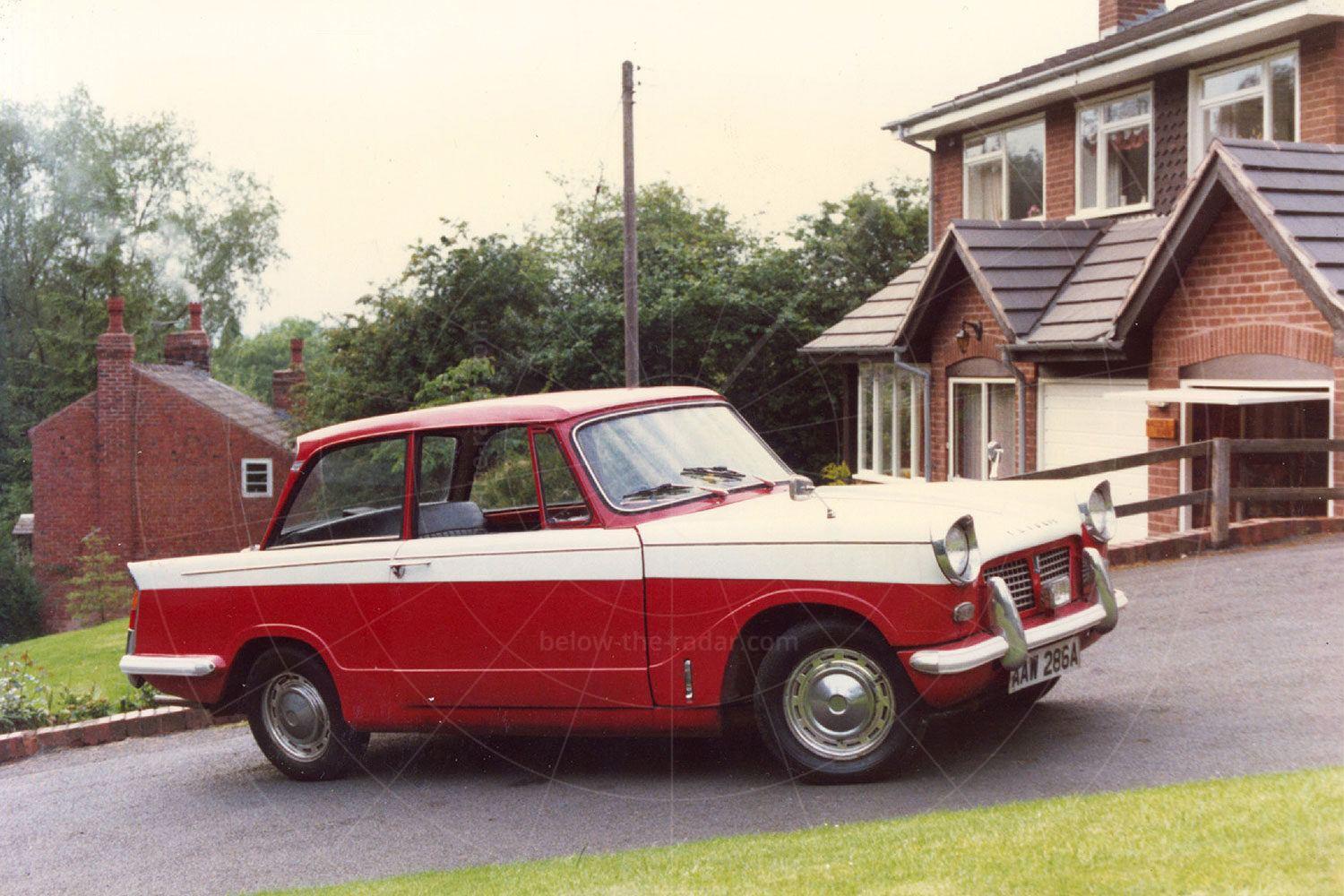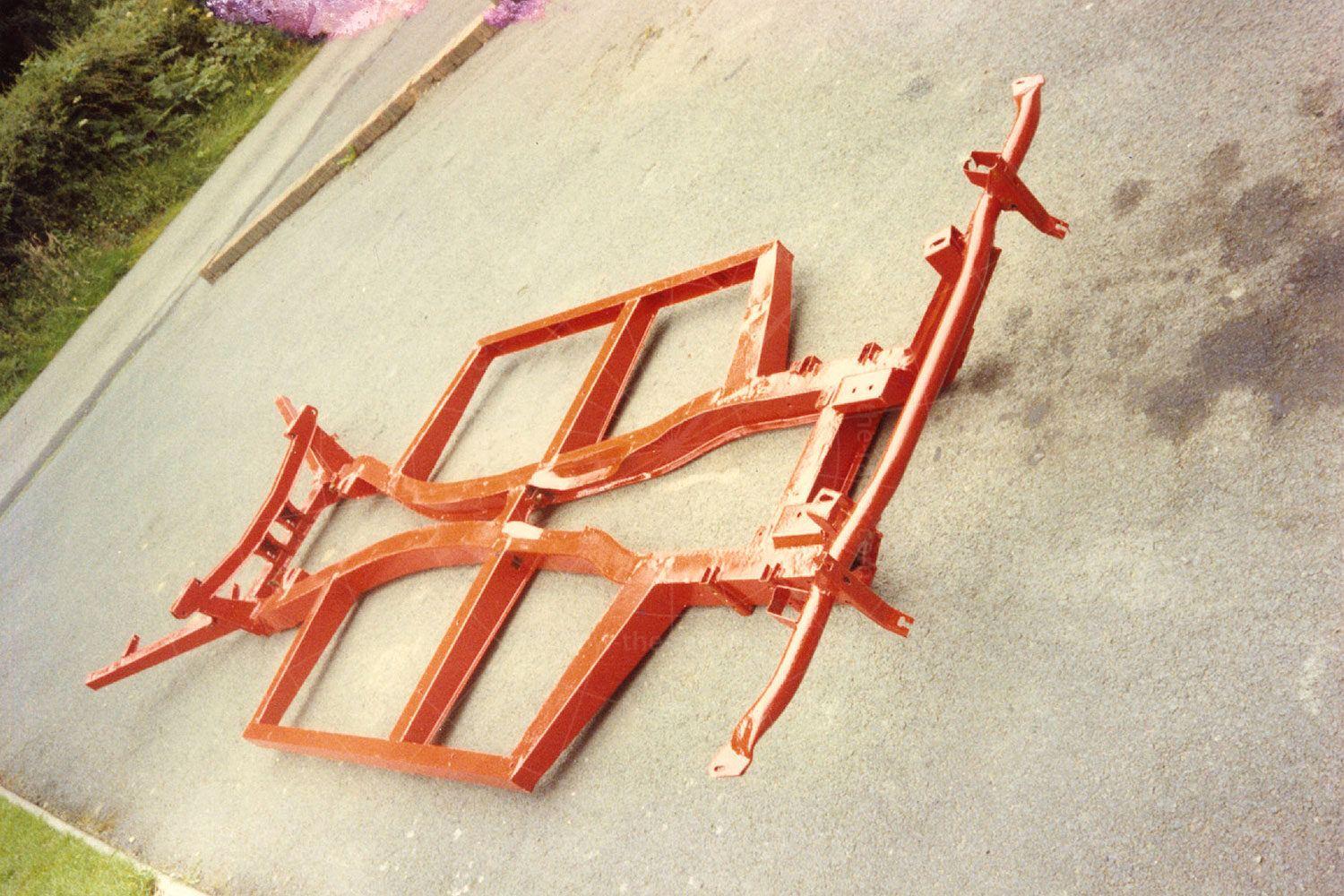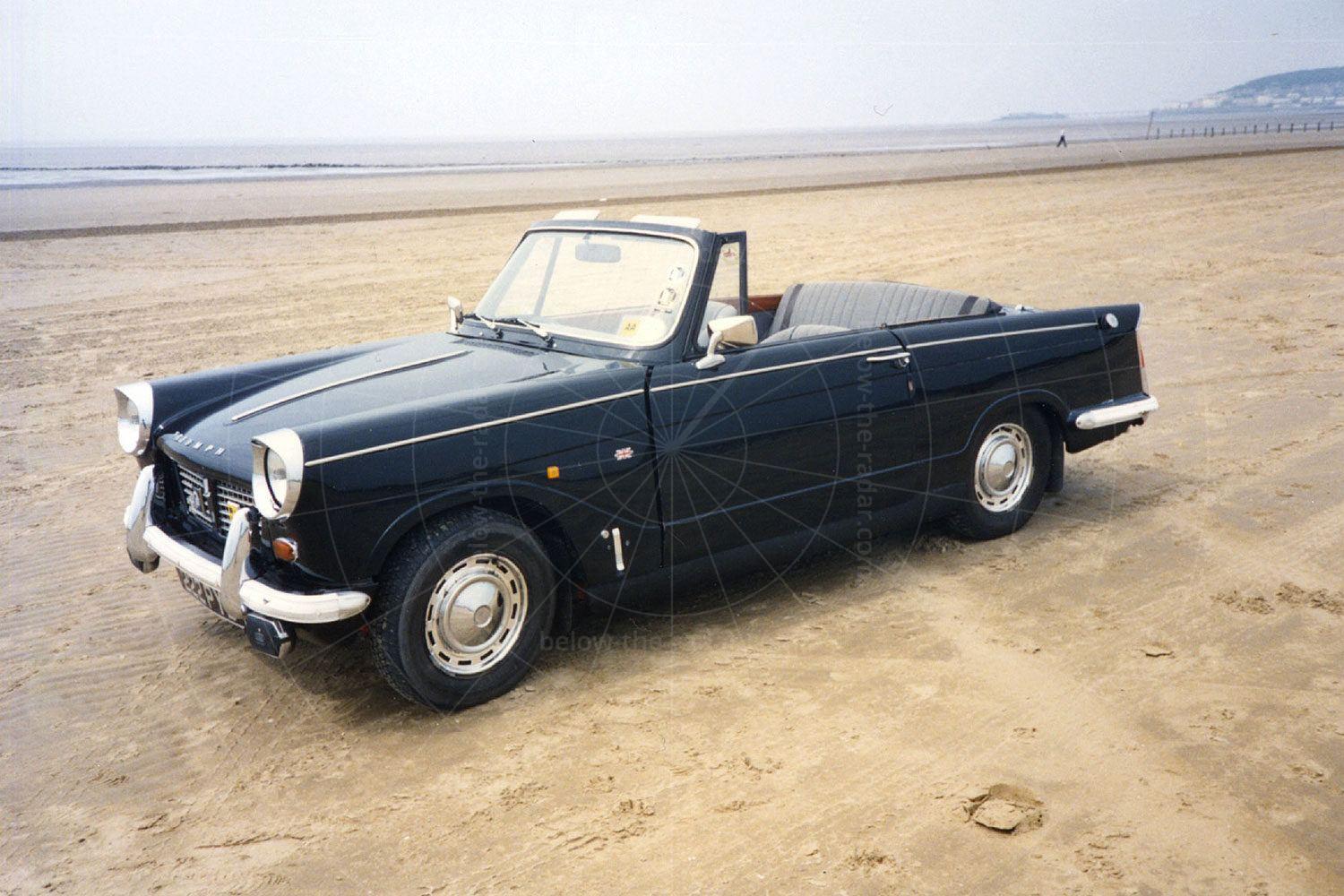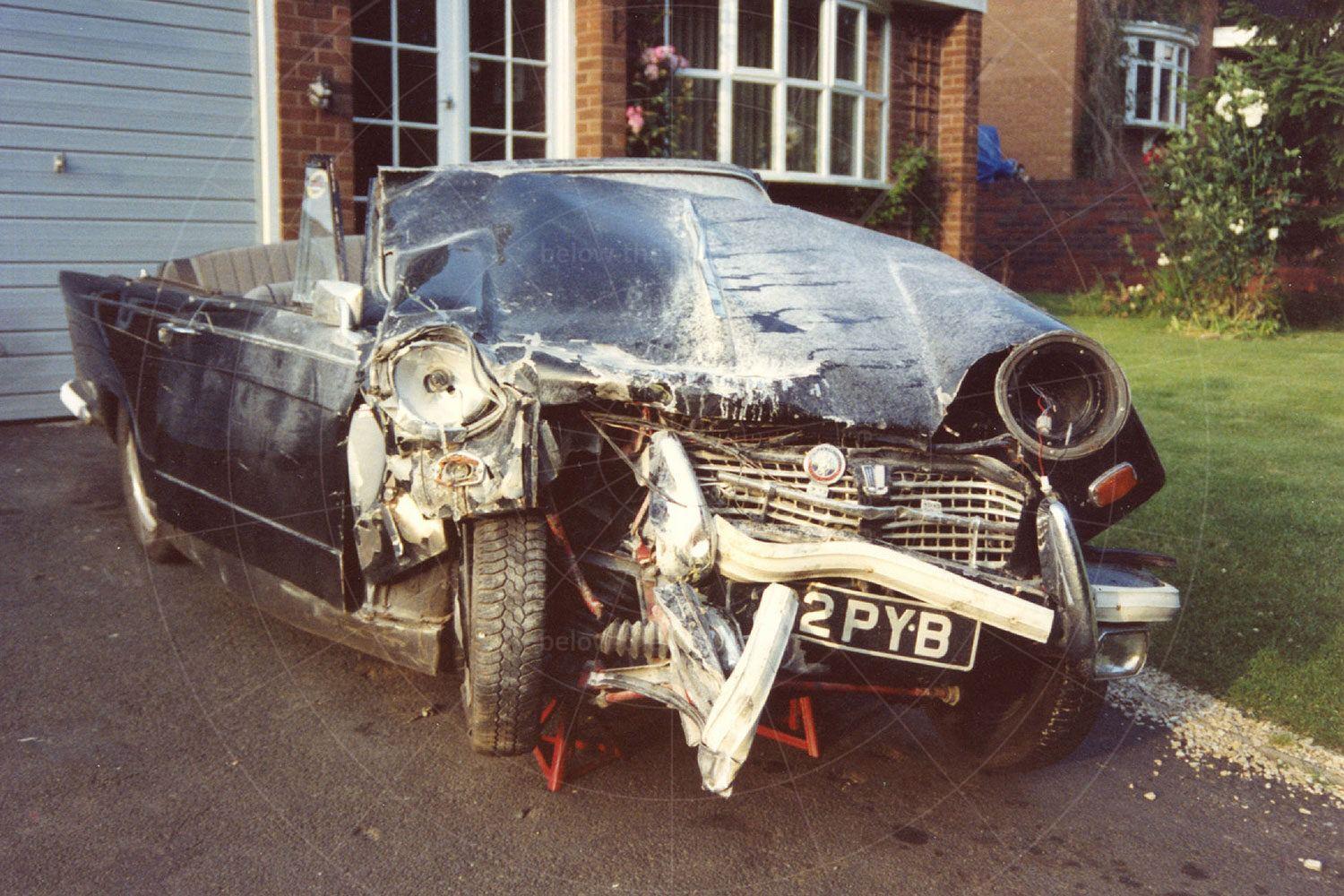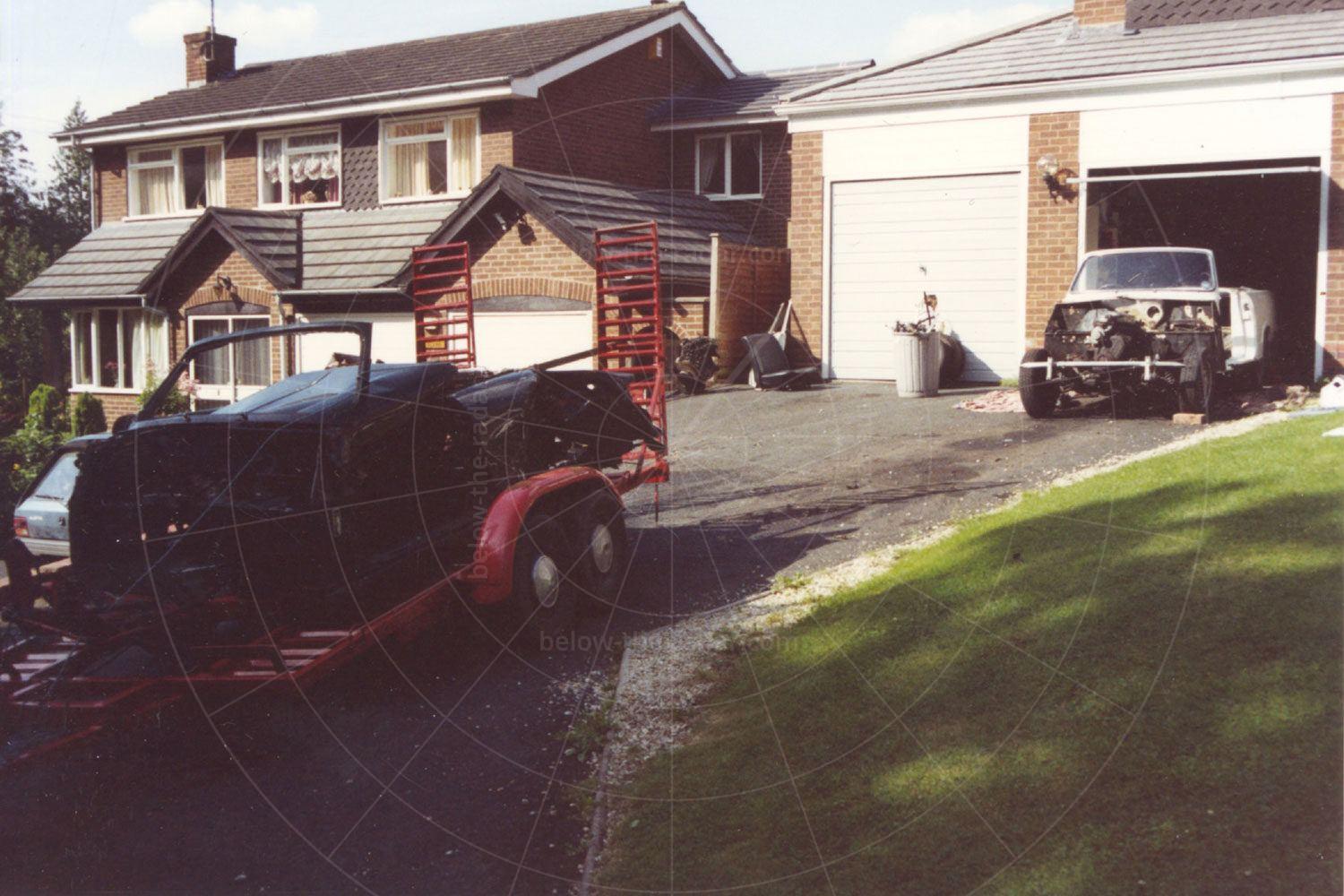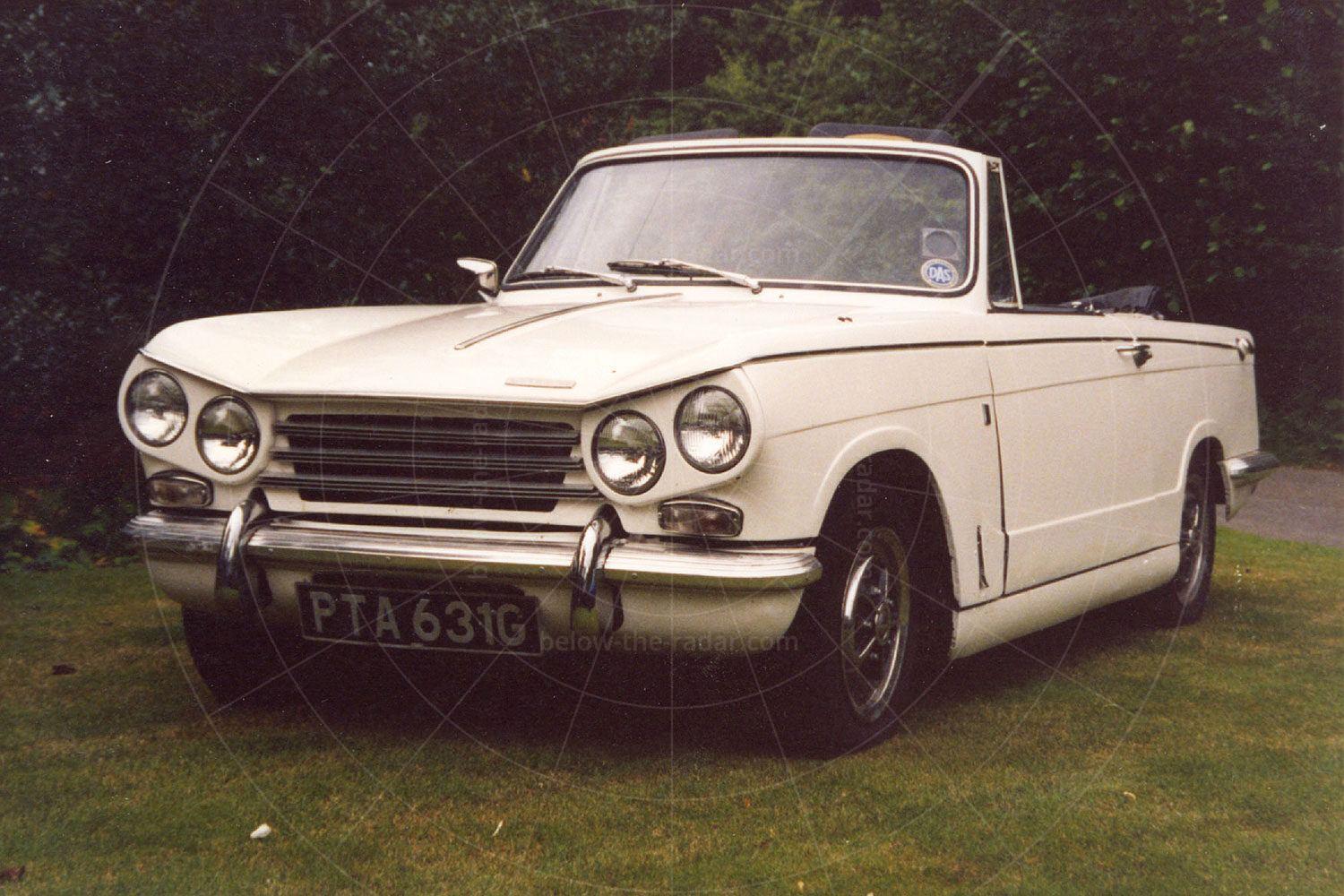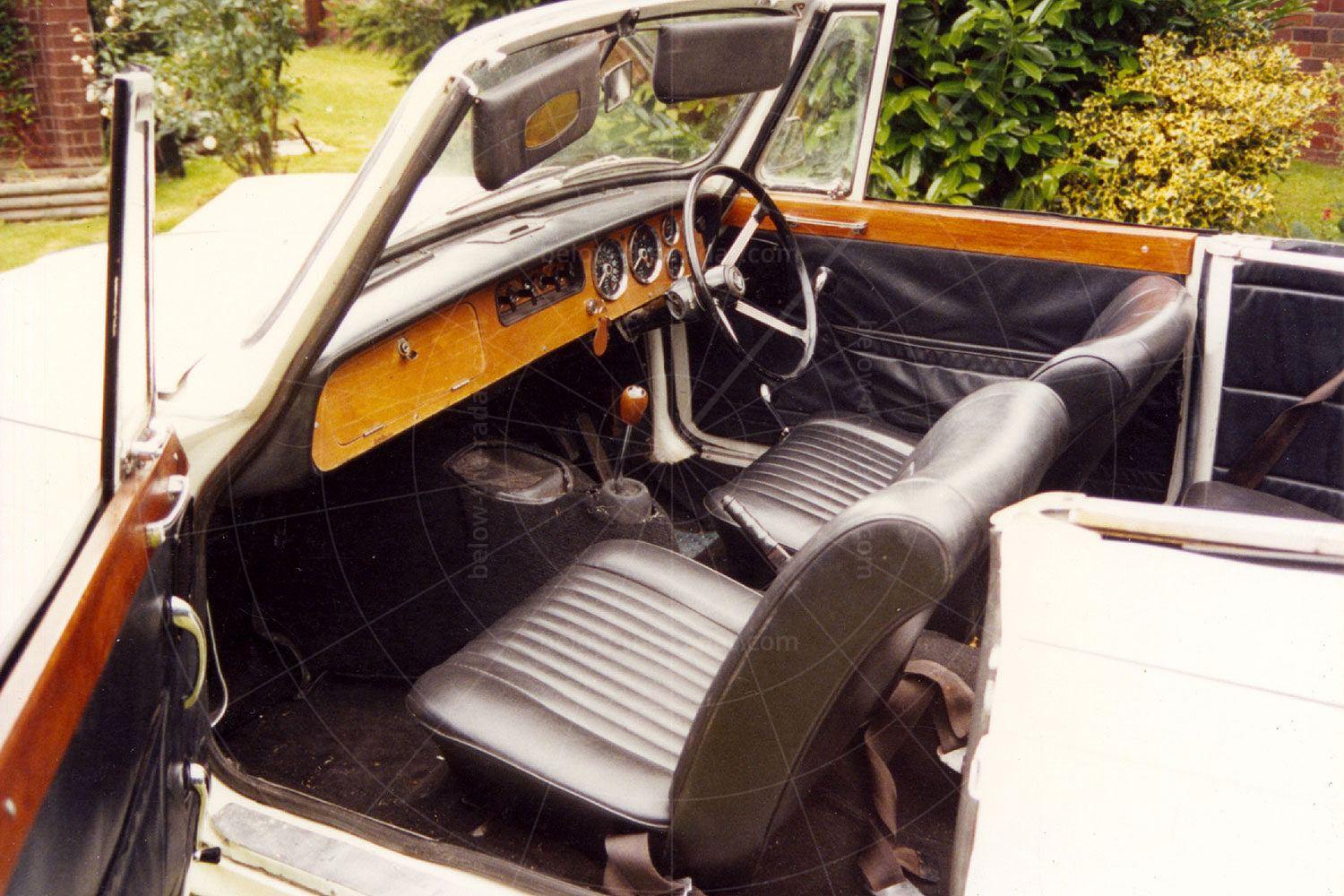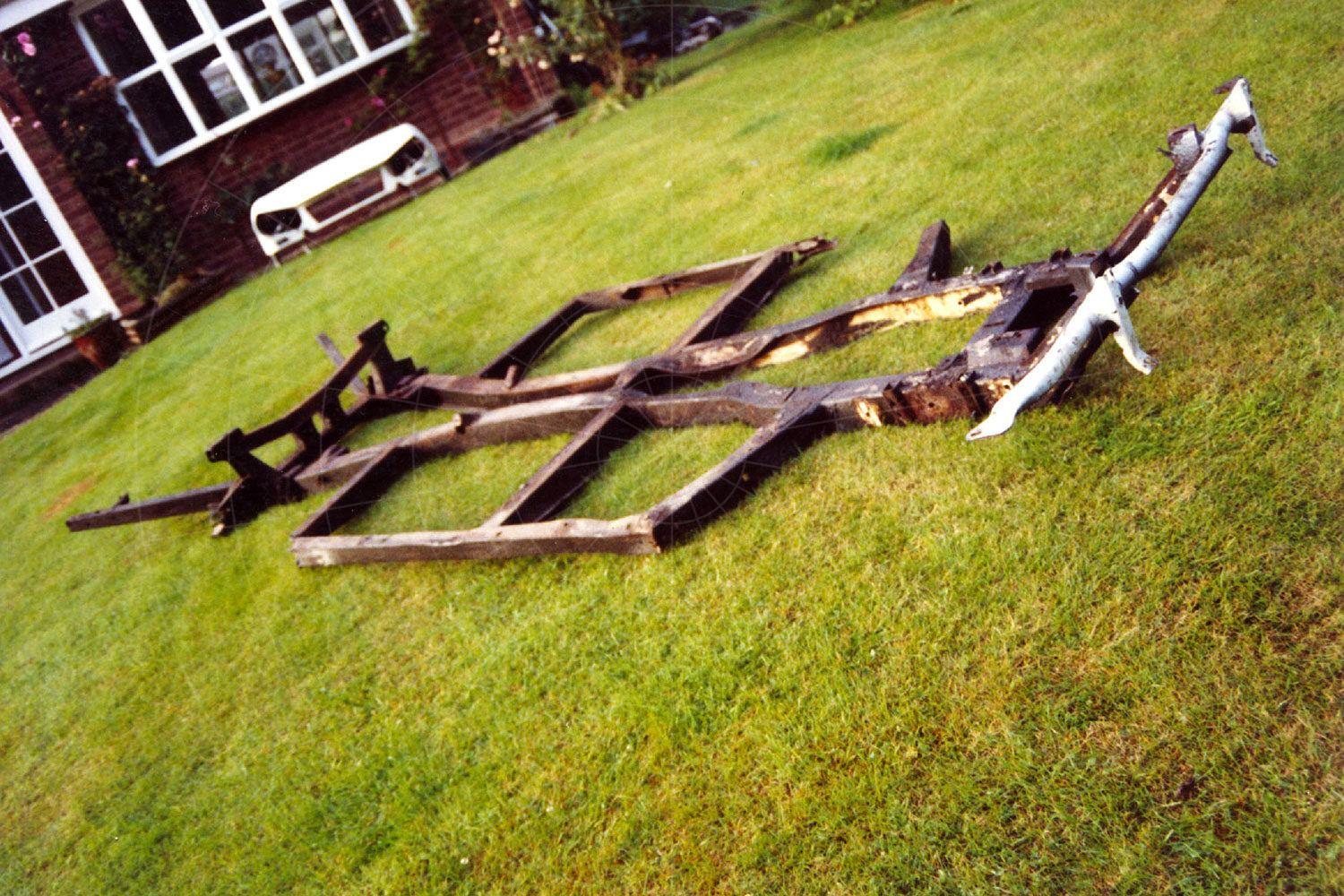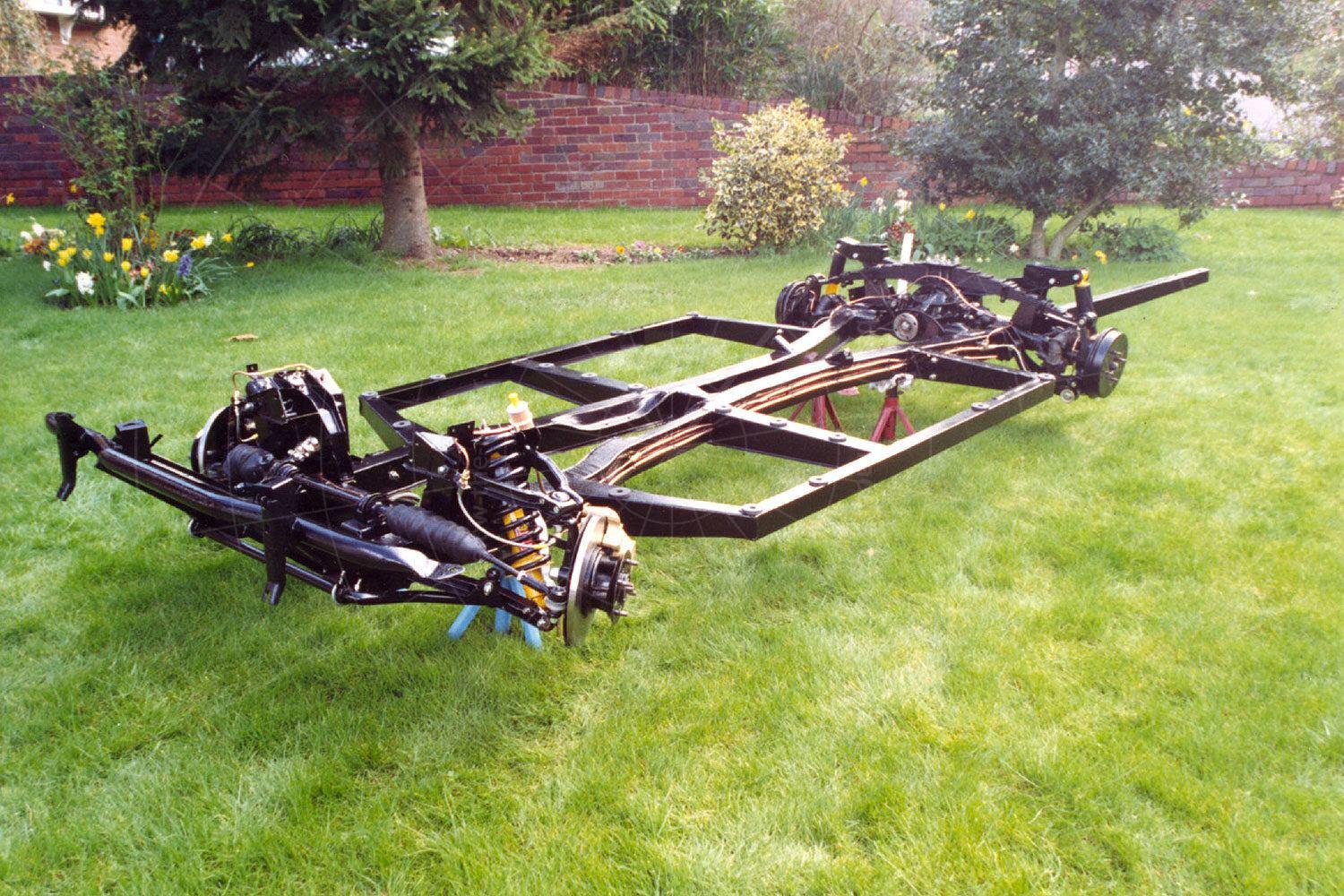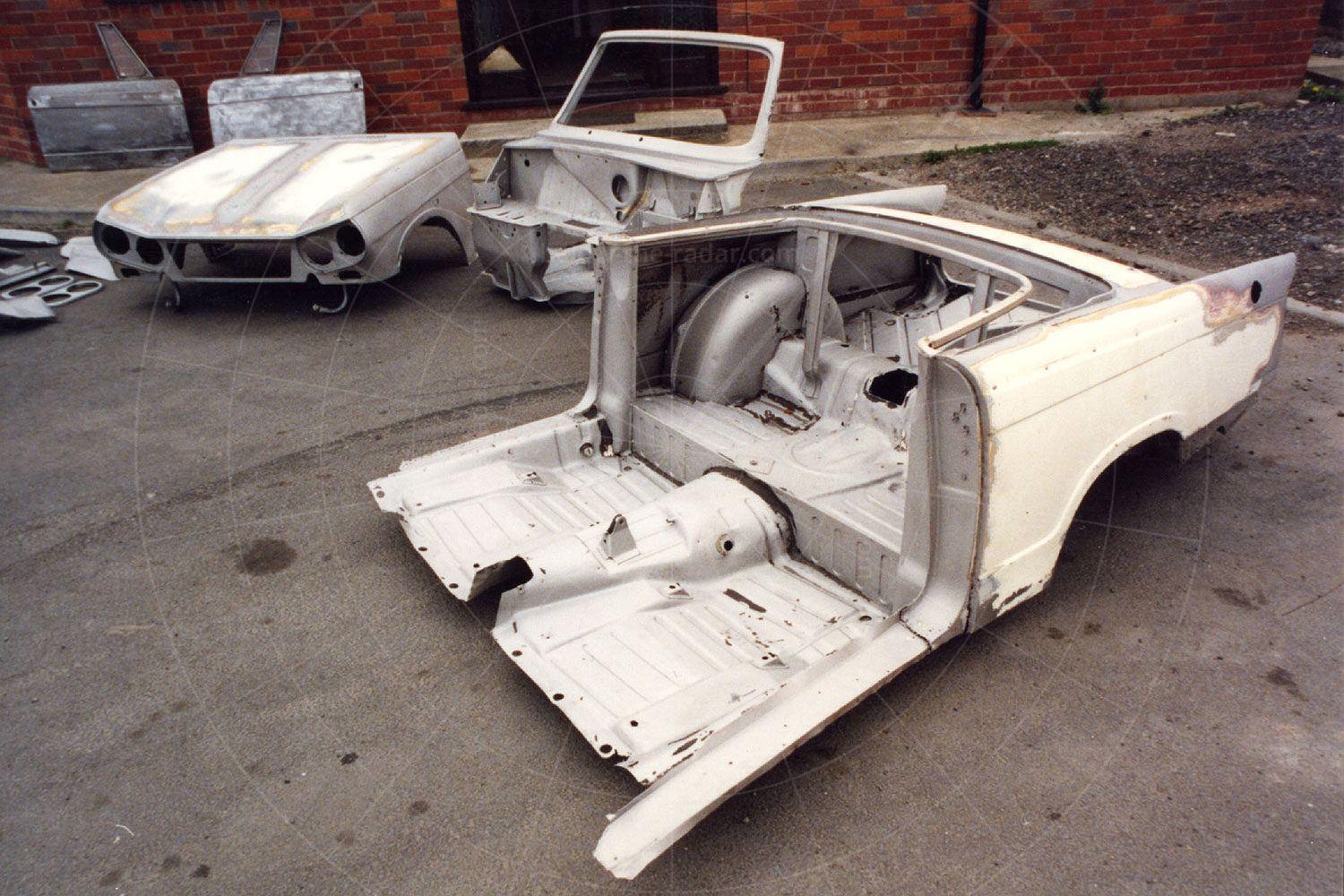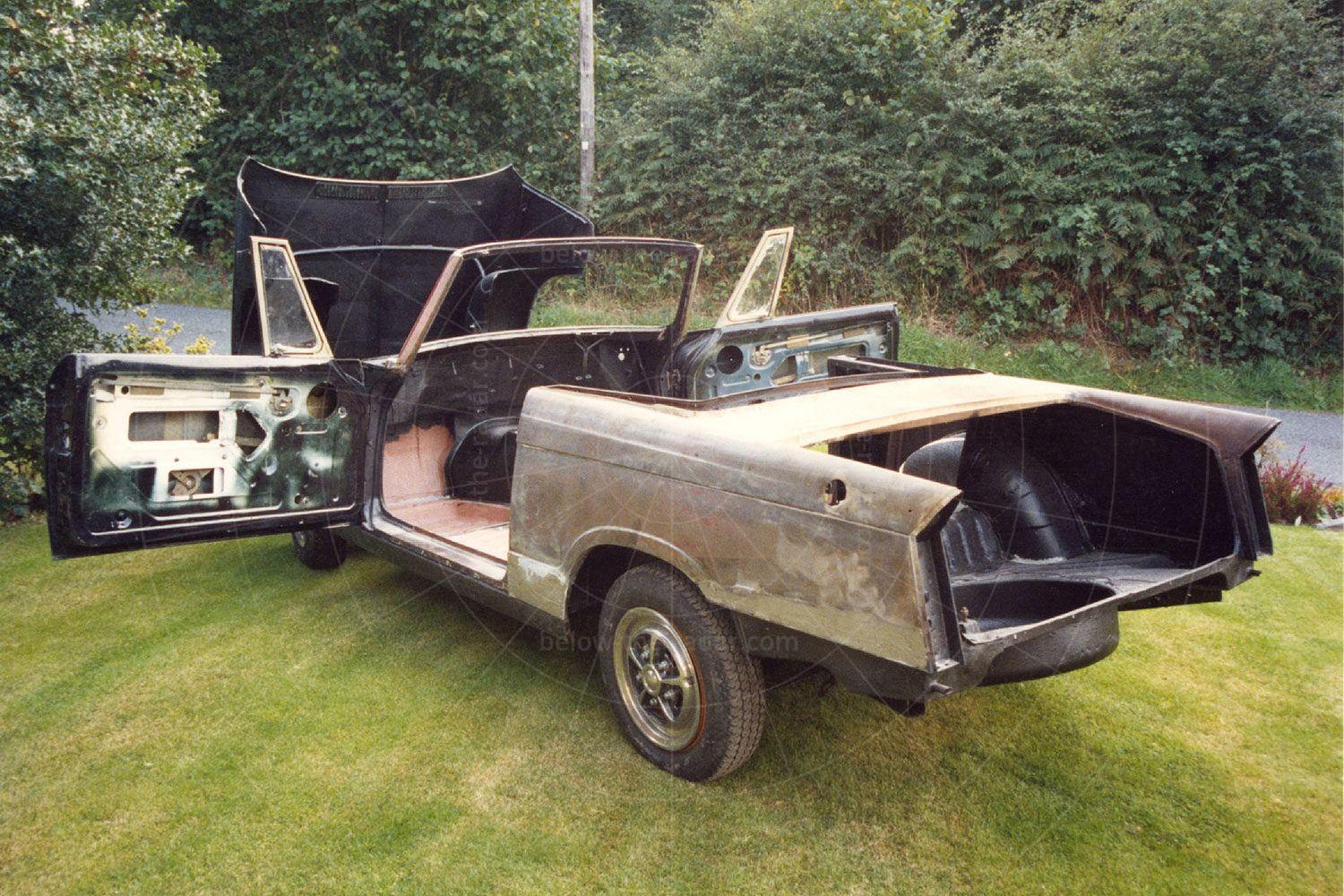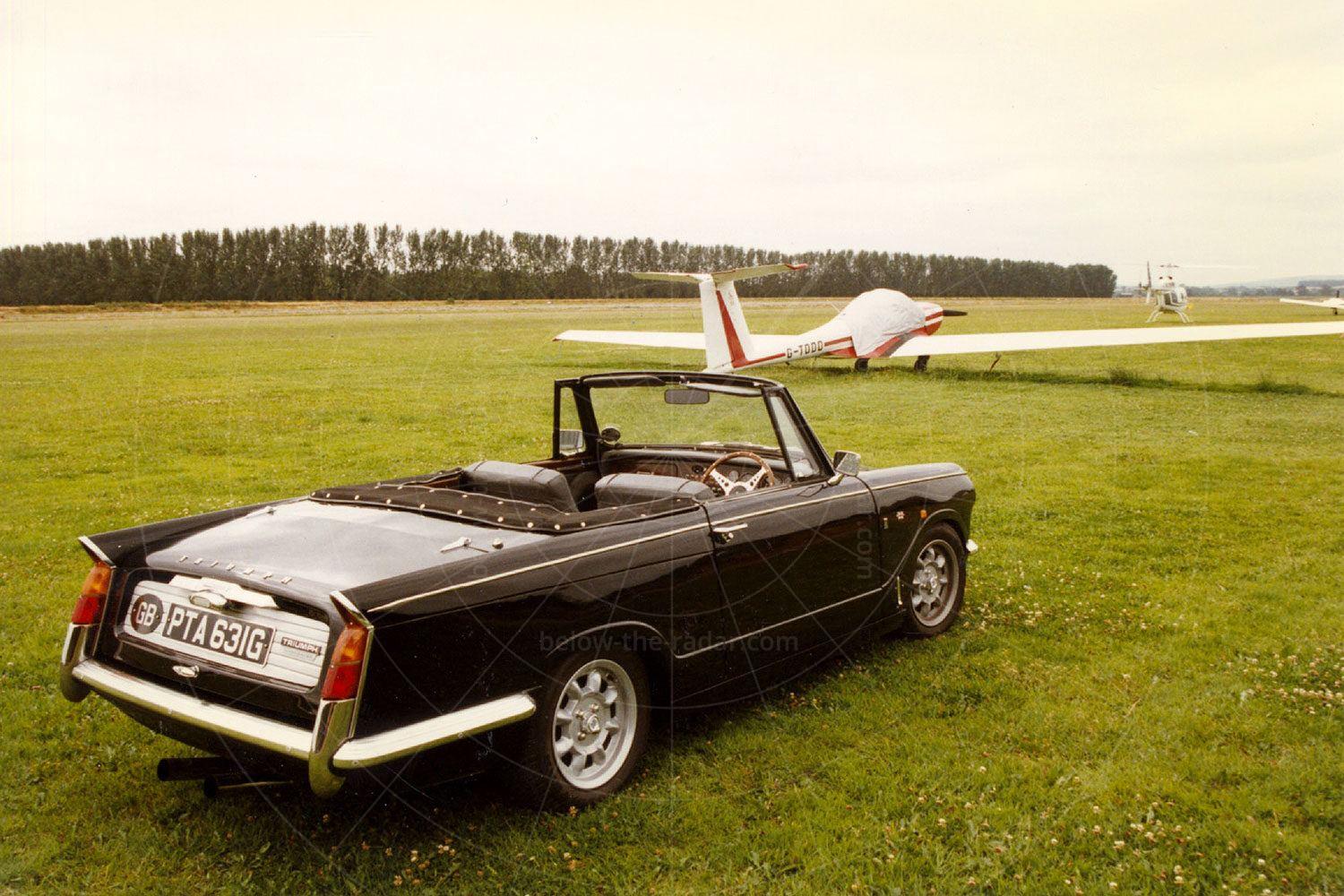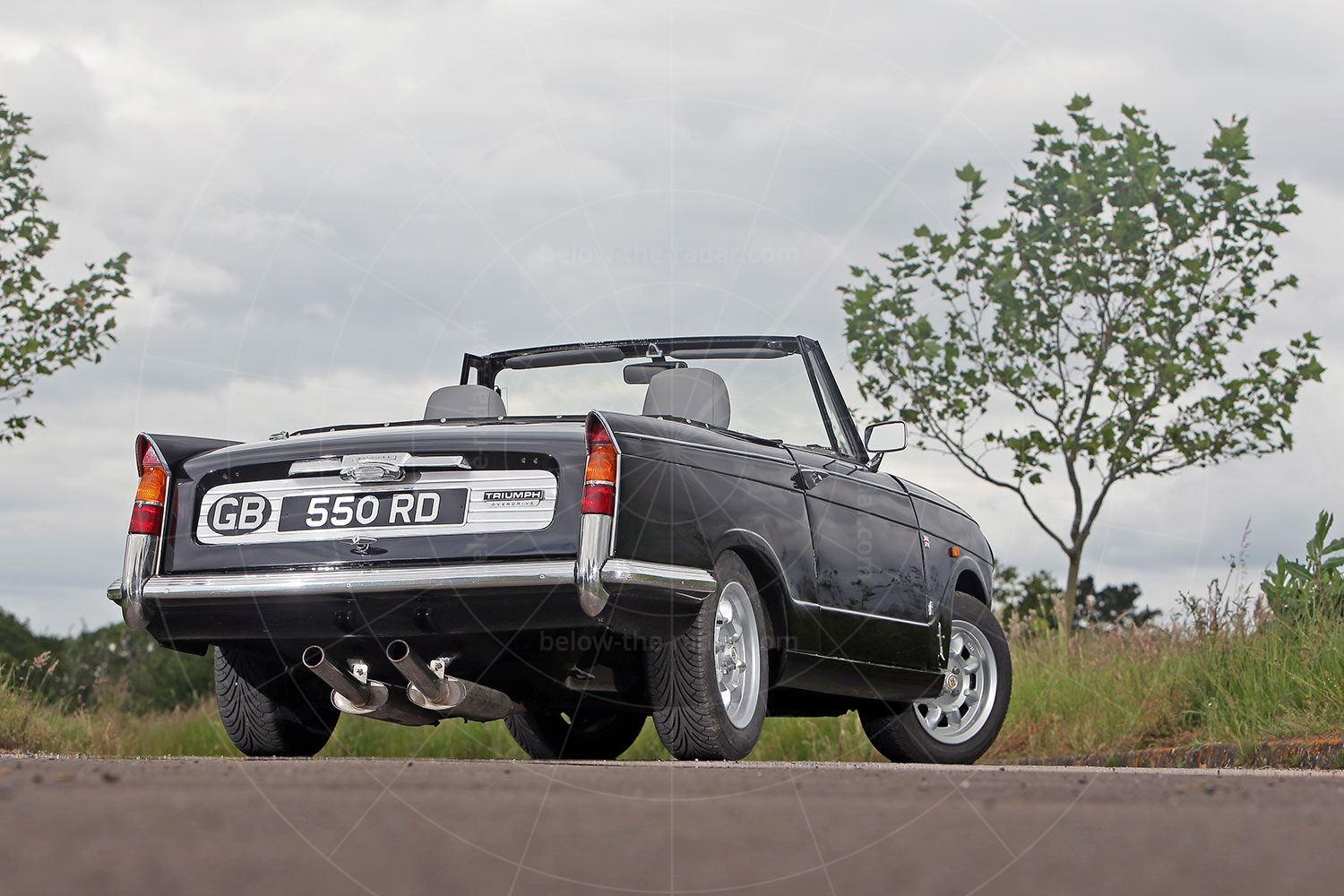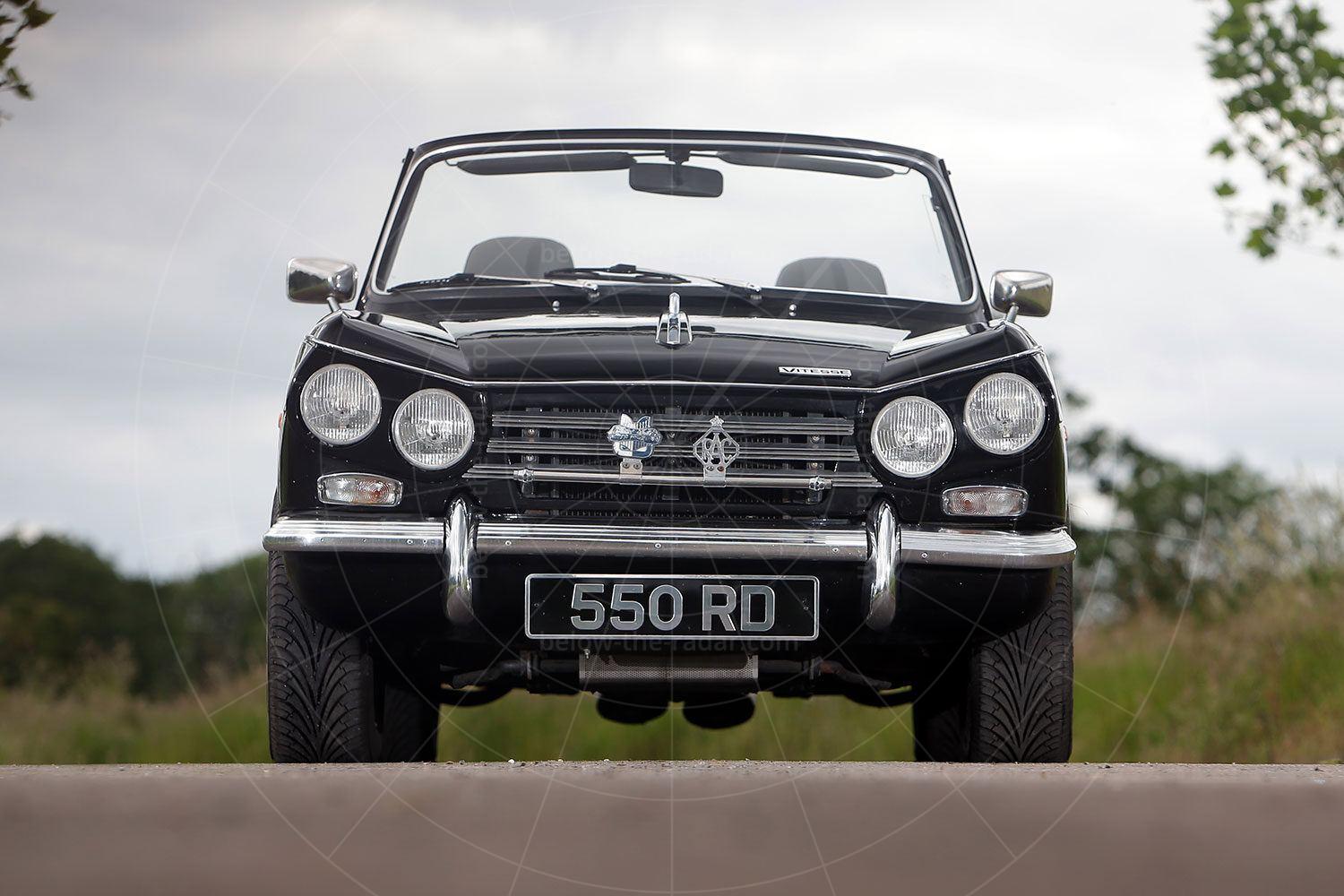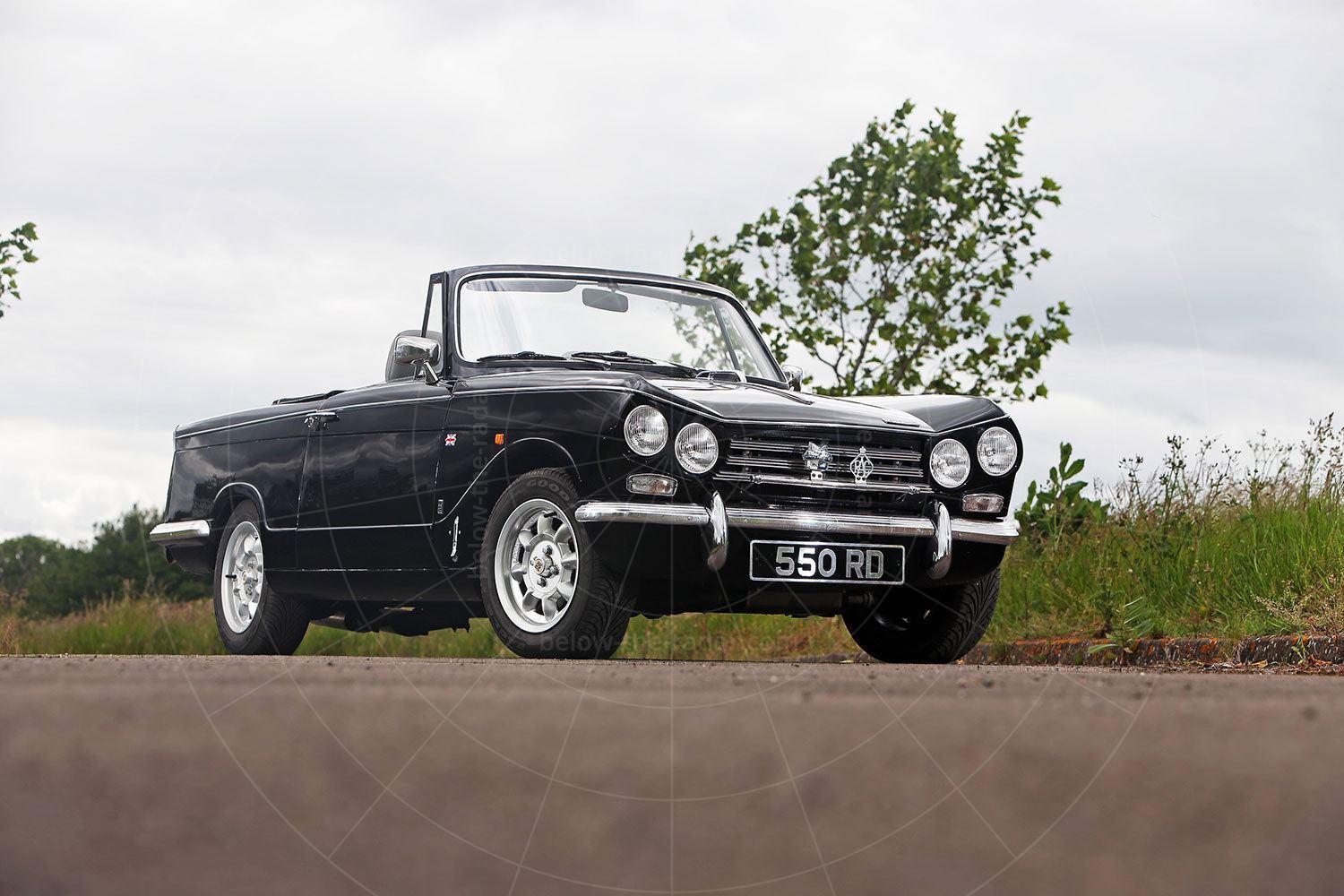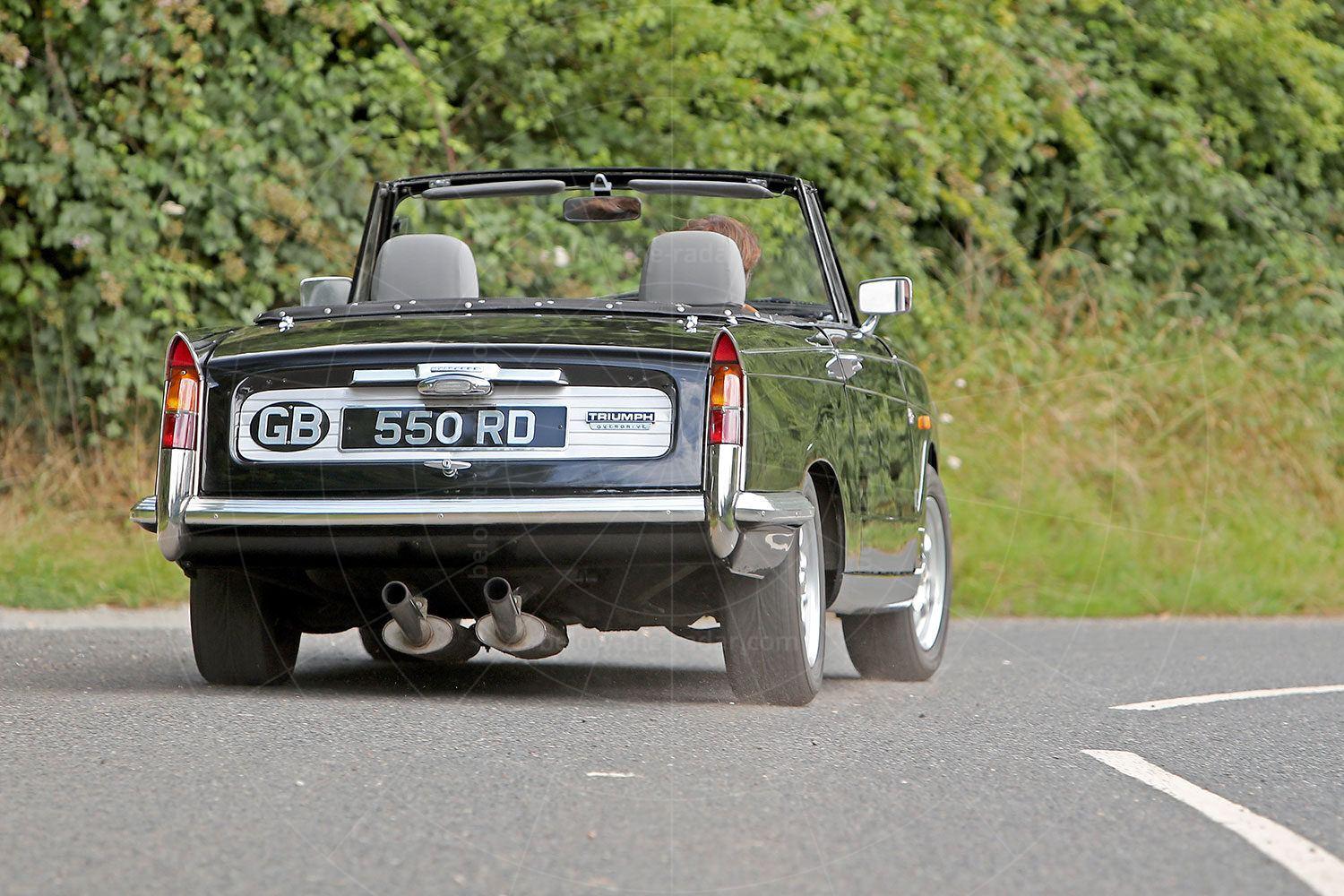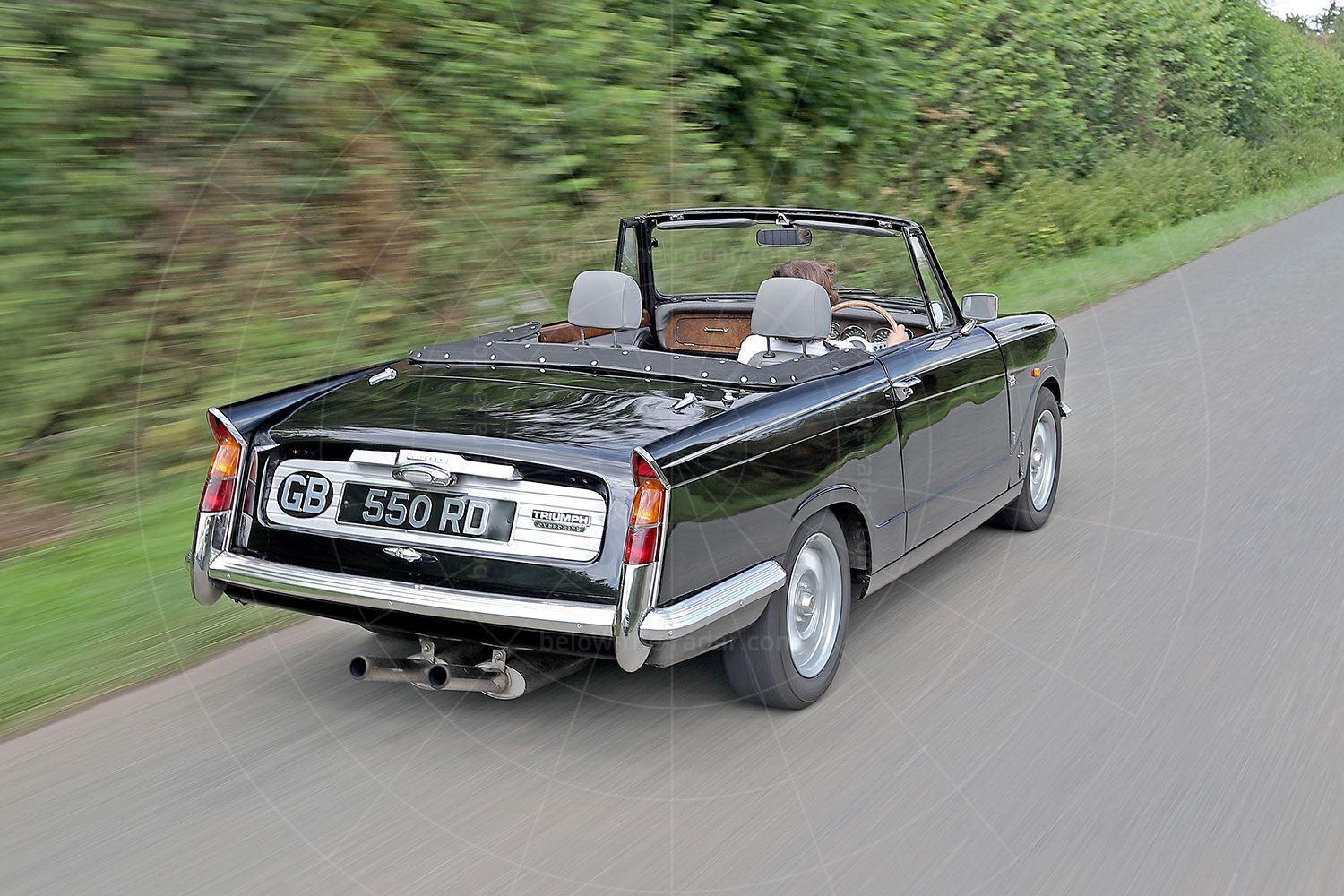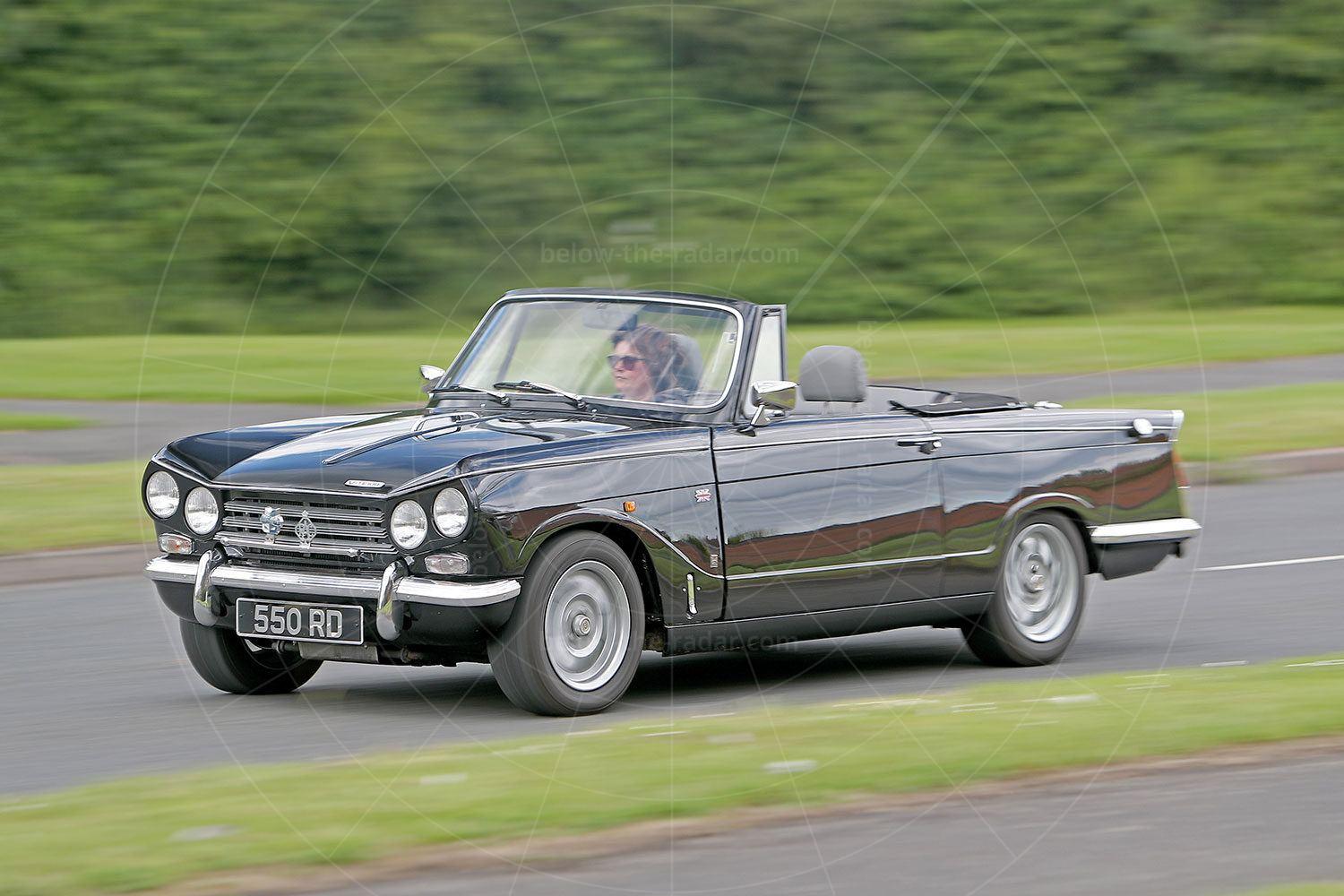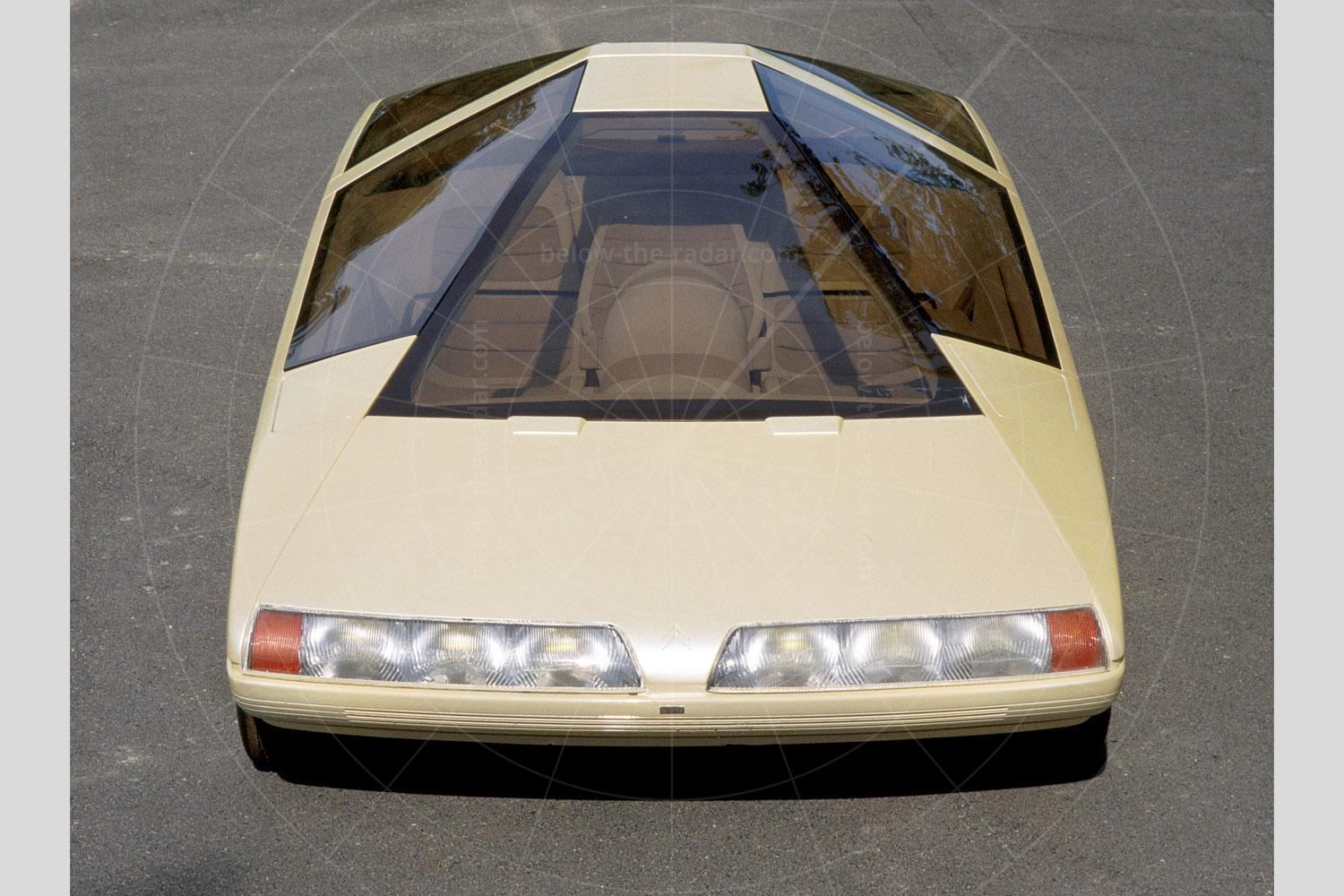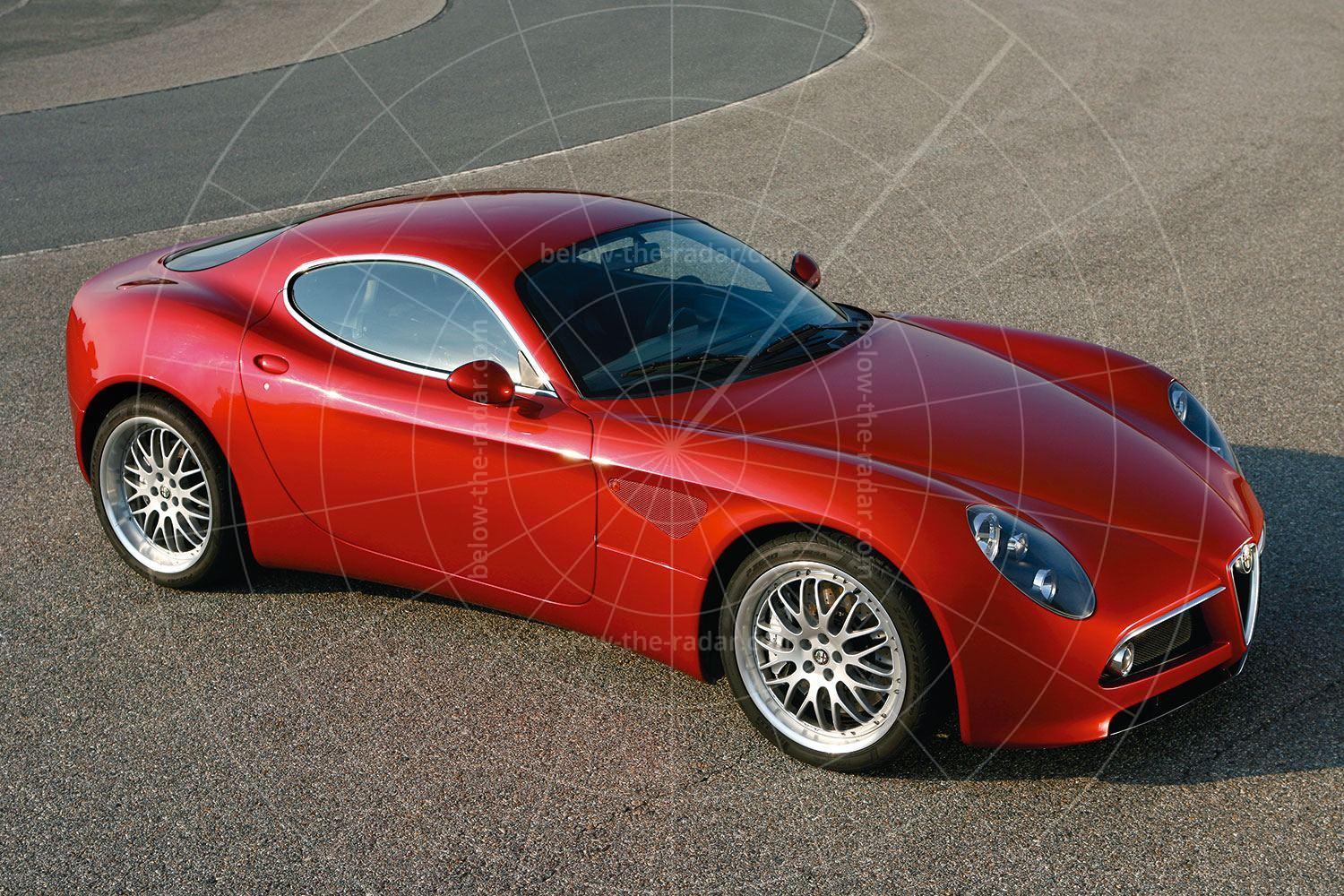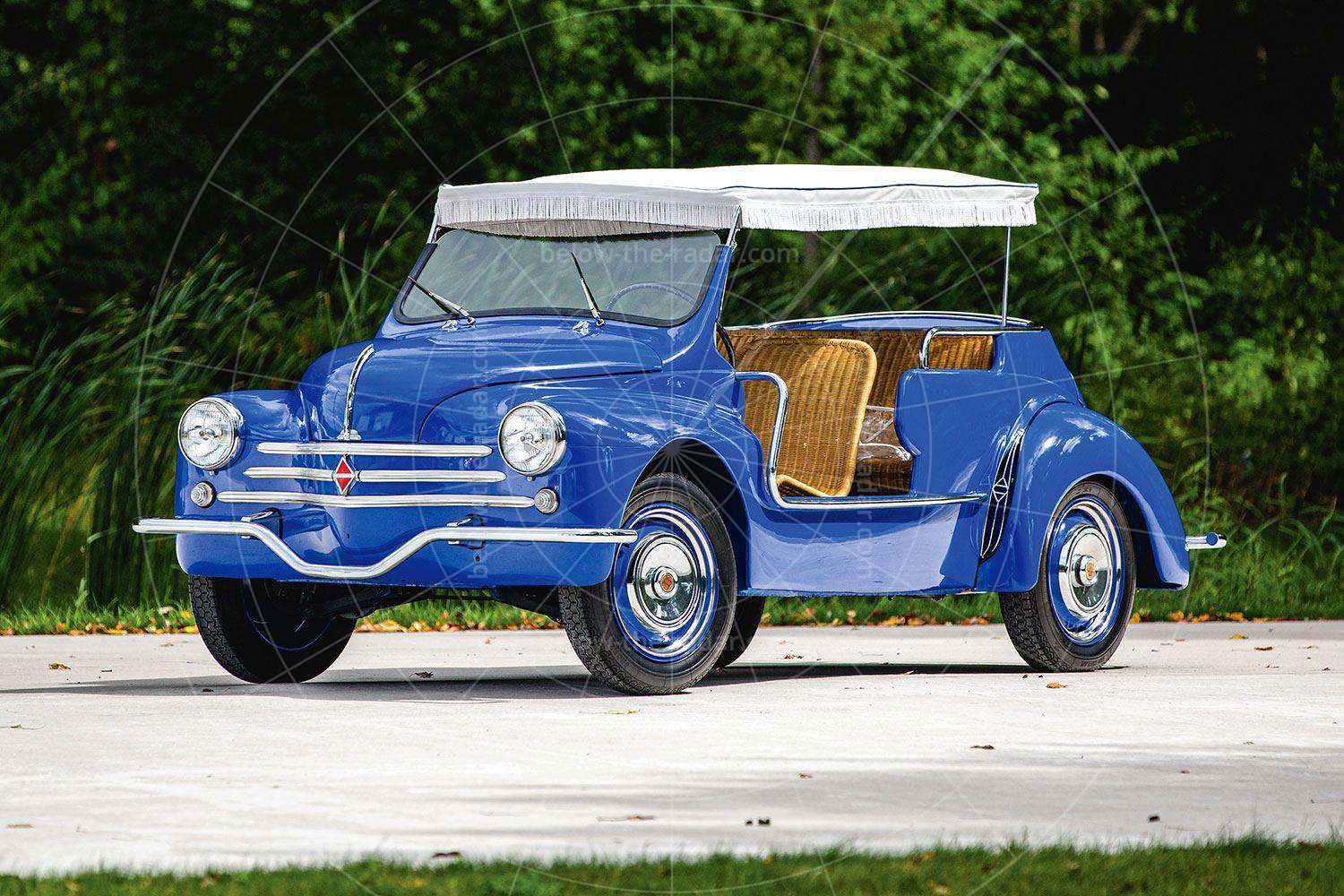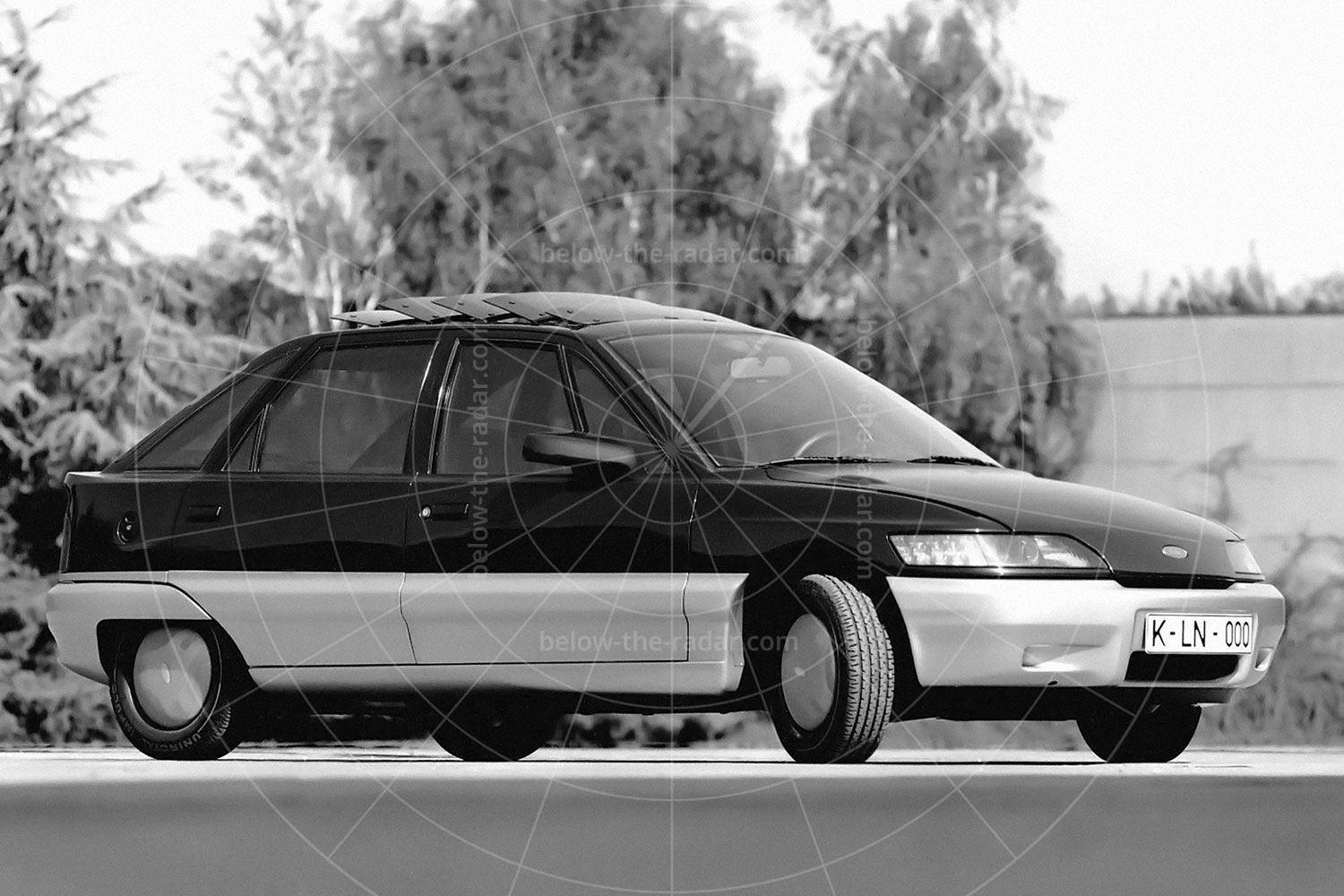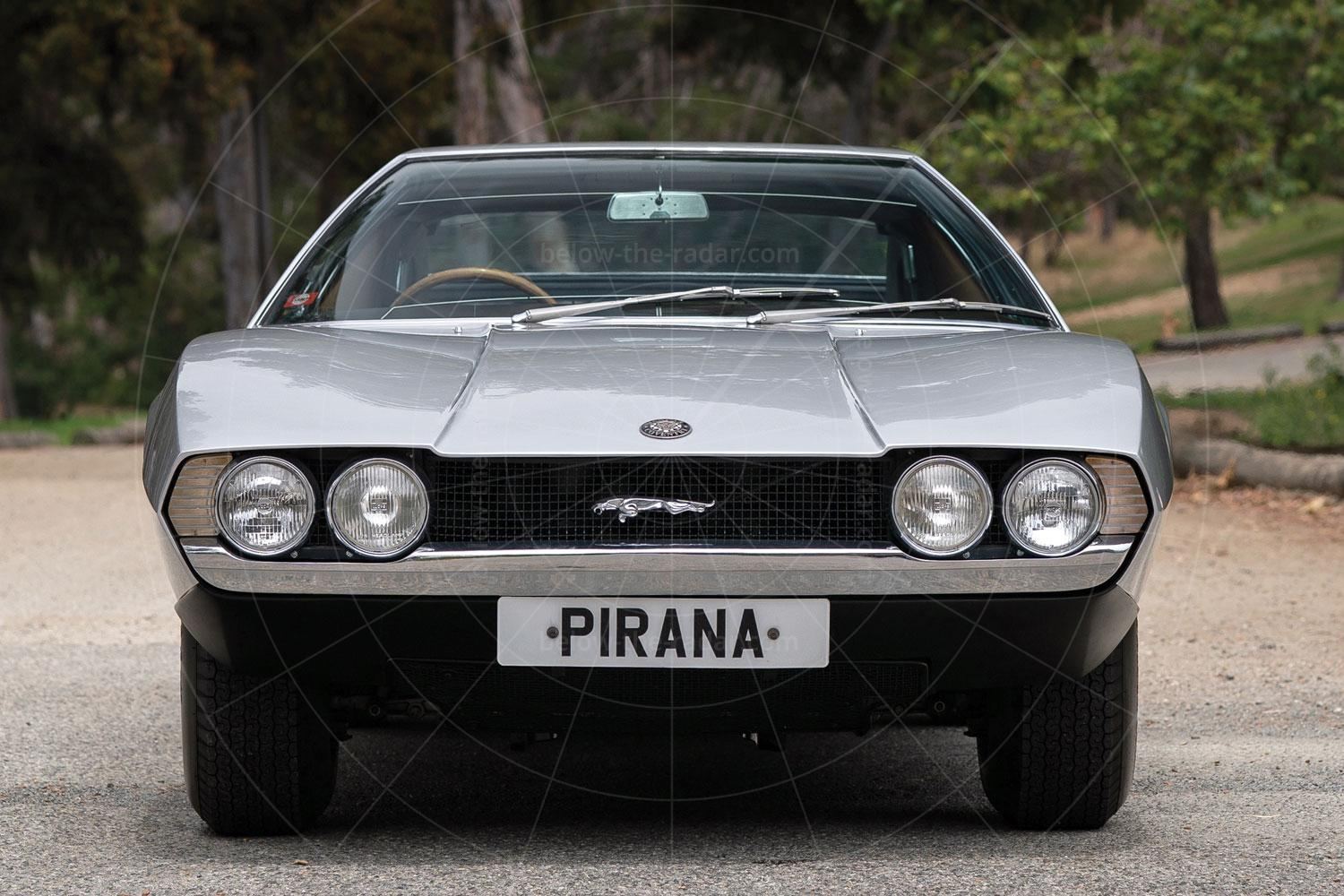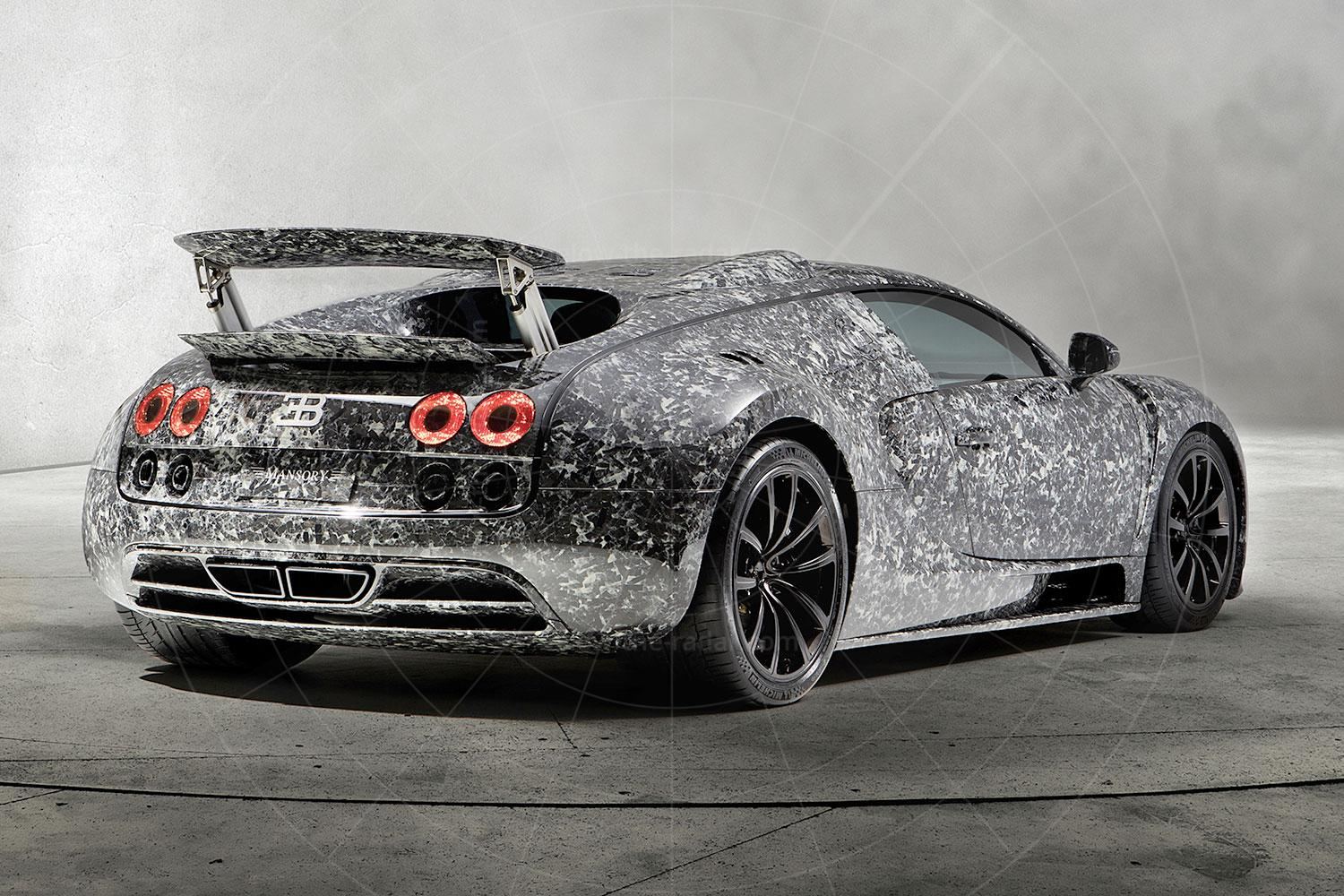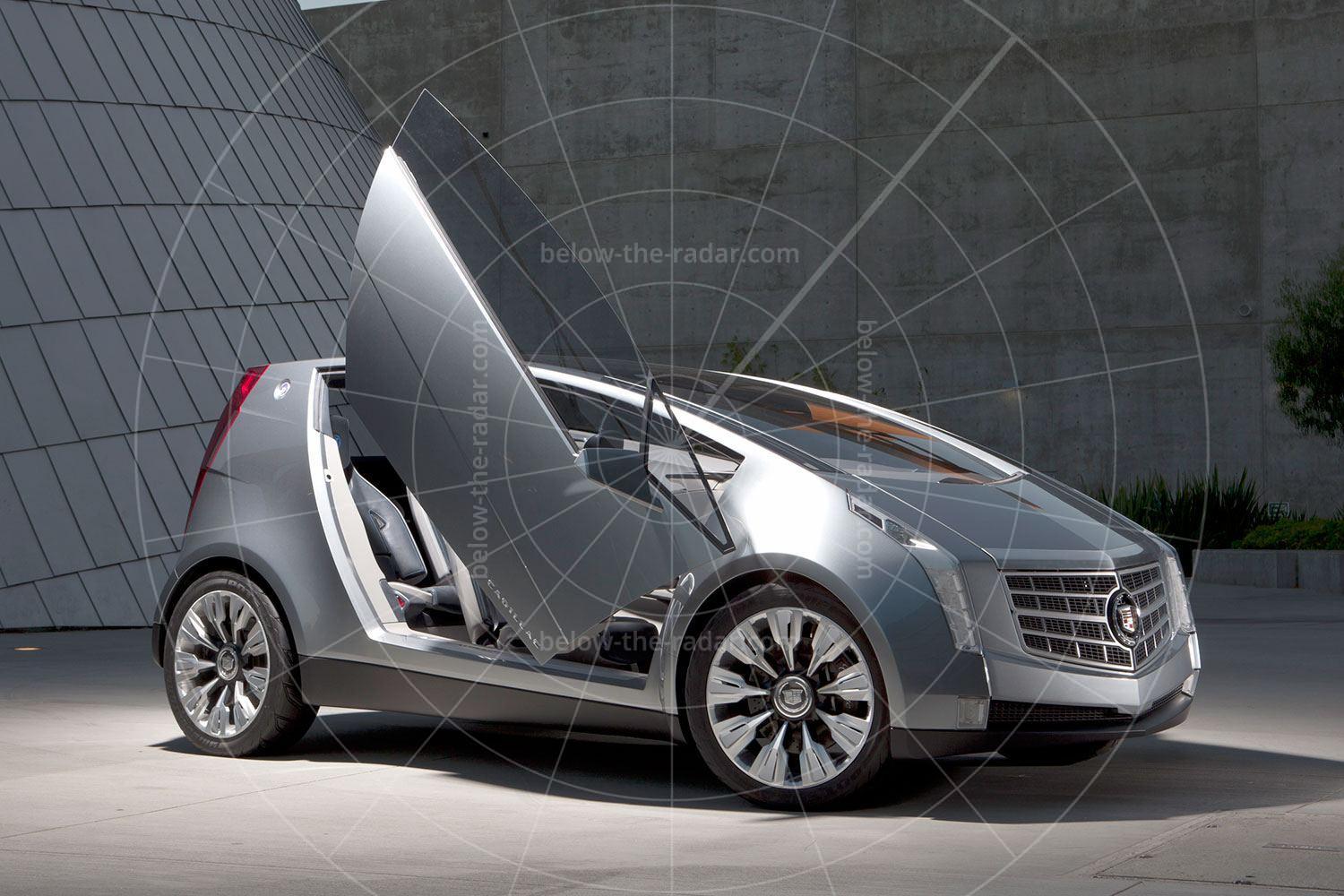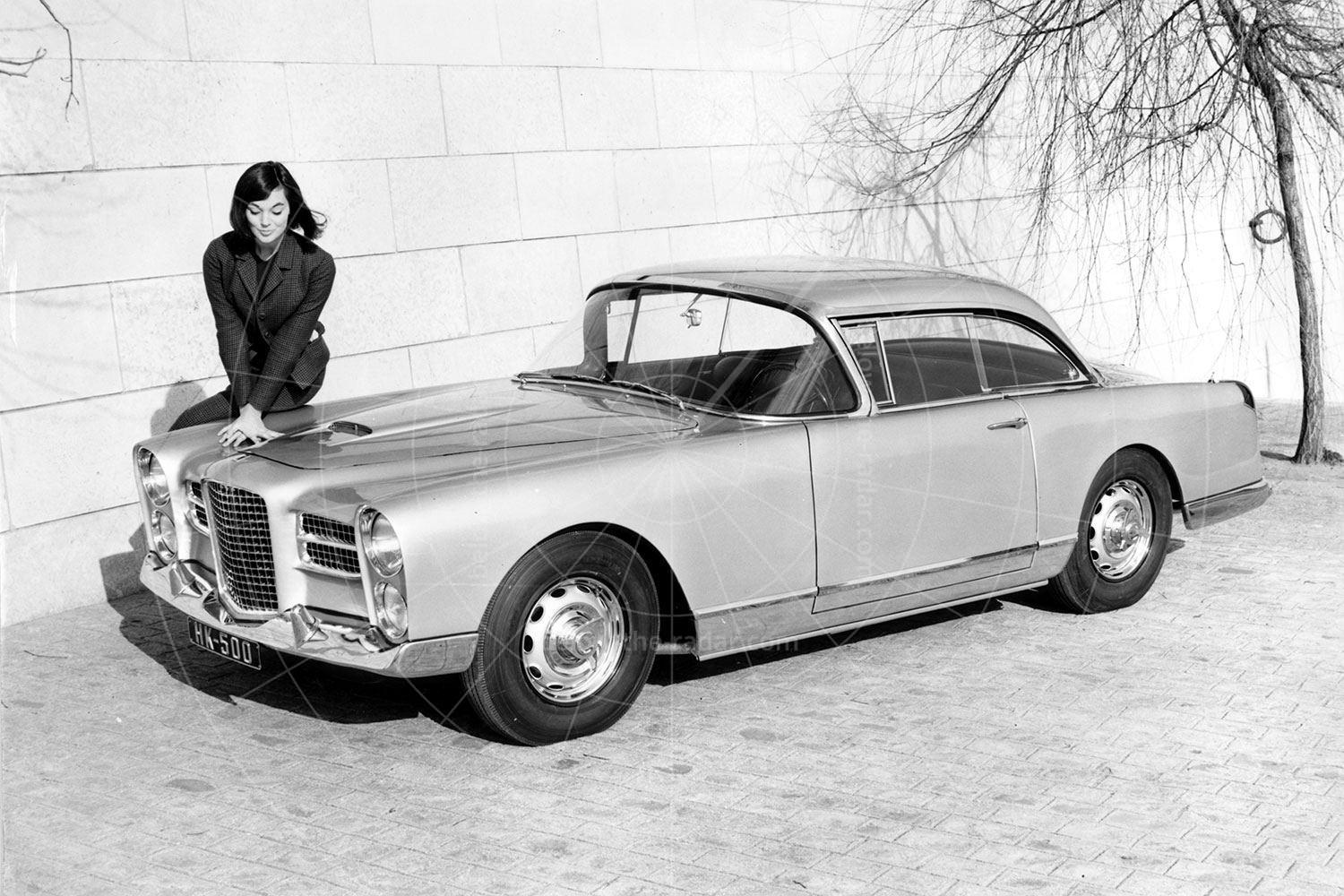Below The Radar wouldn't normally feature a Triumph Vitesse, as this was a mass-produced family car. But this is my own Vitesse that I bought way back in 1992, and it's featured in the classic car press from time to time since the late 1990s, most notably in Practical Classics magazine, which I've written for since 1998. As a result my Vitesse is already quite well known, so I thought I'd tell its whole story in one go. In theory I'm breaking my own rules by featuring a car that to most Europeans isn't really below the radar, but in other parts of the world these six-cylinder Triumph Heralds aren't so well known. Besides, rules are there to be broken and it is my website...
The Triumph Herald was introduced in 1959 with a 948cc four-cylinder engine. It came in saloon, estate, convertible and coupé forms, and there was also a commercial derivative called the Courier van. In 1961 a 1200 engine was introduced, then a year later came the first six-cylinder edition, called the Vitesse. Distinguished by four headlamps instead of two, the earliest editions had an engine that displaced just 1.6 litres, and with all of 70bhp on tap, these early Vitesses weren't especially powerful.
The Vitesse 1600 was replaced by a 96bhp 2.0-litre model in 1966, which in turn was superseded by the 2.0-litre Mk2 in 1968. This brought a 104bhp engine and redesigned rear suspension to improve the handling, and just like the models that had come before, it was available only in saloon or convertible forms. Unlike the four-cylinder Herald which was closely related, the six-cylinder Vitesse was never offered as a coupé, estate or van.
However, this story isn't so much about the Vitesse in general; it's more about my love of Triumphs, which started in 1987 when I acquired a 1962 Herald 1200 saloon for my 16th birthday. I spent three years completely restoring that car, upgrading it along the way so that I could use it as my everyday transport.
I fitted a 1300 twin-carb engine, overdrive gearbox and a Webasto sliding cloth sunroof, and because the car was rebuilt on an early Vitesse chassis, it had bigger brakes too. My Herald was used on an everyday basis from when it went back on the road in 1990 until it was destroyed in a crash in 1992. I was 21, and on the brow of a hill an 18-year old drove head on into me in his Mk1 Ford Escort, as he was trying to overtake another car coming towards me.
Although my Herald was a saloon, I was driving it in convertible mode, which is possible thanks to the roof simply unbolting and there being a separate chassis rather than monocoque construction. Despite a closing speed of around 100mph I just walked away from the crash, the Triumph standing up to the impact far better than you might expect. I'd fitted inertia-reel seatbelts and a laminated windscreen, plus the car had no corrosion to weaken it, but the way it looked after me was still pretty impressive.
My beautifully restored Triumph being trashed just two years after I'd finished rebuilding it was pretty upsetting at the time, but its demise allowed me to buy the car I'd wanted all along, but which I couldn't originally afford – a Vitesse convertible, and specifically a 2.0-litre Mk2 with the updated rear suspension. Around 3500 of these were made between 1968 and 1971, and as the most sought after of all the Vitesse derivatives, the survival rate is pretty good.
I wanted to buy a project car to completely restore and upgrade along the way, and in August 1992 I found a 1969 Vitesse convertible that was tired but original. I spent the next four years completely restoring and upgrading it, although this time the plan was to use it only occasionally, rather than all of the time.
I swapped the 2.0-litre engine for the much more torquey 2.5-litre unit as seen in the TR5, TR6 and Triumph's big saloons. With a stage-three head, triple Weber 40 DCOE carbs and a tubular manifold, I was guaranteed plenty of power for easy cruising, with things helped by a taller final drive ratio; I switched from the factory-fitted 3.89 diff to a 3.63 unit from the Spitfire 1500, which I've since changed to the 3.27 axle that featured in the non-overdrive GT6.
When the Vitesse returned to the road in 1996 it had been painted black and the interior had been retrimmed in grey leather. I'd made a unique dashboard, fitted cut-down Austin Metro GTA front seats, and there was a stronger gearbox with a J-Type overdrive, in place of the original D-Type unit. Over the next 20 years the car covered 30,000 miles with only the odd hiccup.
With those thirsty Weber carburettors fitted, I swapped the original mechanical fuel pump for an electric alternative, and it's this that has caused me the most problems over the years, with the pump having failed twice – and on both occasions I was touring in France at the time.
At the end of 2016, 20 years after the car had been returned to the road, it was looking tired and was ready for a refresh. The bodyshop that had repainted the car had put filler into some of the seams, which had cracked allowing water in, leading to corrosion. The answer seemed to be to strip everything back, repair and repaint, but in the end a lot of new outer panels were needed, along with a complete respray.
This time I used David Aspinall at Anglian Triumph Services, who did a great job of replacing the doors, rear wings and bonnet, and in the process he lined everything up far better than Triumph ever did. He also achieved a paint finish way beyond anything the Canley factory ever managed.
While the car was going through this second restoration I took the opportunity to fit stronger brakes, swap the rotoflex driveshafts for CV-jointed alternatives and the full sports twin-pipe exhaust was downgraded to a quieter semi-sports single-pipe system, in a bid to save my hearing on long-distance drives. The Metro GTA seats were swapped for heated Mazda MX-5 items and the huge stereo installation that had been a feature of the original rebuild was removed, to be replaced by something far more discreet – and lighter.
David Aspinall did all of this work (apart from the hi-fi installation) and in spring 2019 my Vitesse went back on the road, half a century after it first rolled off the production line. In that time the engine, gearbox, overdrive, back axle, brakes and suspension have all been upgraded, while most of the outer panels and all of the interior trim have been renewed. So in reality there's not much of the original car left, but at least I'm now set up for the next half a century – assuming we're not all forced to convert our classics to electric of course.

